Items
Site
The Medicine Chest
keywords is exactly
love
-
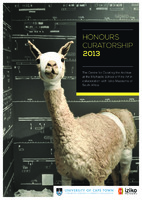
A translated rock
In 2012, while exploring possible curatorial opportunities for the Honours in Curatorship students, I met with Sven Ouzman, a curator in the archeology department at Iziko, to chat about possible opportunities pertaining to this collection. I took him the newly designed course prospectus, to peruse. He flipped through it and when he got to the second last page, he paused. ‘Do you know the story behind this image’, he asked. I told him I didn’t… He pointed at the rock in the bottom right hand corner and started his story. Apparently this rock was not part of the SAN Rock art collection at all. It belonged to an archeologist who worked at the museum for close to twenty years. When she first started at the museum, her partner, now husband (and also an archeologist) also worked there with her. They were still in the beginning of their relationship and he was, to use older terminology, still courting her. One of the gifts he gave her during this period, was a rock he drew that mimicked San rock paintings, probably ones that would pertain to love in some way or other. She kept this in her office and, when she finally left the museum and had to empty her belongings, forgot to pack the rock as well. Exit archeologist, enter the lady who tidied the office before the new occupant moved in. On finding the rock she assumed it was part of the collection and returned it to the store room where it was assimilated into the bona fide rock art collection. I don’t know in how many exhibitions it subsequently appeared, but in 2010 it appeared up in Pippa Skotnes’s exhibition 'Made in translation' – an exhibition that fittingly explored ways in which translations from the landscape have been made and in so doing, placed images of rock art in the context of other forms of translation. -
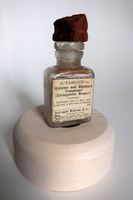
Livingstone
A small wooden chip from the same object collection as the medicine chest balanced on top of one of the bottles from the chest. "The treatment, the Livingstone rouser, was formulated by Dr Livingstone, who, after an attack of malaria in 1853, patented this mixture of quinine and purgatives (calomel, rhubarb and jalop) mixed with opium (Barrett & Giordani 2017: 1655–1666). The chip balanced on its lid is said to be from the almond tree under which he proposed to Mary Moffat in 1844. The juxtaposition of these two objects, one representing the quantifiable and the other the poetic, draws the viewer to consider the conflation of these two realms" (Liebenberg 2021: 273). -

Dialogue goggles
-

Measuring Niagara falls with a teaspoon
Georgian silver spoon drawn to the height of Niagara Falls. -

Walter Floyd arrives by boat
"The BWC shop was located a short walk from Walter Floyd’s dental practice which he bought in 1904 (for £2,404 16s 8d) and shared with his partner, William Johnston. It is uncertain when Floyd first came out to South Africa, but records prove that he was living here by January 1902 (Hart & Lydall, 1981: 1)" (Liebenberg 2021: 52). In interviews with Mary Floyd in 2015, I showed her this photo of her father-in-law on the boat, en route to Cape Town, and asked her whether she knew who the woman in the photo was. (She appeared in quite a few photos of Floyd's from this period – one especially intimate one showing her lying on a beach and smiling coyly at the photographer.) Was it Agnes, perhaps? She said it definitely wasn't. -

Strange landscapes
In a short story by the writer Alice Munro titled, 'Walker Brothers Cowboy', a young girl joins her father, a fox farmer turned traveling salesman, on his visits to homes in the countryside where they live. After observing her father nearly getting doused with a chamber pot of urine by an unwelcoming customer, he veers off his usual rounds to visit a woman whom she slowly understands to be his sweetheart from when he was younger. Driving back home, she thinks about the events of the day: "So my father drives and my brother watches the road for rabbits and I feel my father's life flowing back from our car in the last of the afternoon, darkening and turning strange, like a landscape that has an enchantment on it, making it kindly, ordinary and familiar while you are looking at it, but changing it, once your back is turned, into something you will never know, with all kinds of weathers, and distances you cannot imagine. When we get closer to Tuppertown the sky becomes gently overcast, as always, nearly always, on summer evenings by the Lake" (Munro 2010: 23). -

Chip of wood from an almond tree
Said to be a chip from the tree under which David Livingstone is said to have proposed to Mary Moffat 1884. Wood chip was donated by R.F. Immelman who purchased it from Kimberley museum. -

Four bruises
Poster designed by film director, Mike Mills. His 2010 movie, 'Beginners', is structured as a series of interconnected flashbacks. Following the death of his father, Hal, from cancer, Oliver reflects on their relationship during the last five years, since the death of his mother. -

"I have scars on my hands from touching certain people"
"The words of Seymour Glass, eldest sibling of the Glass family – a lesser known creation of J.D. Salinger’s literary world. The story of this family of child geniuses, who appeared on a 1927 radio quiz show called 'It’s a Wise Child', is chronicled in three of his books – mostly centering on the relationship between the two eldest brothers, Buddy and Seymour. Salinger favours Seymour. He was the most brilliant and idiosyncratic of all the children and unfortunately, for the most part, only present as a memory – since he committed suicide, age 31. Buddy reminisces about one specific Seymour moment: His mother urging him to see a psychiatrist and him telling her that he doesn’t need a head doctor – he needs a hand doctor or a dermatologist, whereupon he looks at his hands and tells her he has these scars – these discolourations on them – from touching certain people. Certain heads, certain colours and textures of human hair leave permanent marks on him. When he put his hand on his little sister Franny’s head when she was still in the carriage, it left a mark. Or with her twin brother, Zooey, when he was six or seven, during a spooky movie. He put his hand on Zooey’s head when he went under the seat to avoid watching a scary scene. It left a mark. Other things, too. Charlotte, the girl he was in love with, tried to run away from him once and he grabbed her dress. It left a permanent lemon-yellow mark on the palm of his right-hand (Salinger 1964:59). His hands were filled with these discolourations – these physical manifestations of his emotions. They became a type of medical condition. And he needed to cure it" (Liebenberg 2011: 91 - 93). Salinger recounts the day of Seymour's suicide in a short story he later wrote, called 'A Perfect Day for Bananafish'. -
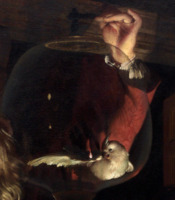
Canary
Sentinel species are used to detect risks to humans by providing advance warning of a danger. The idea of placing warm-blooded animals in a mine to detect carbon monoxide was first proposed by the Scottish physiologist John Scott Haldane in 1913. Canaries (Serinus canaria ) were considered the best sentinel animals for detection of dangerous gases because they were found to be more sensitive than other species evaluated (Pollock 2016:386-387). -
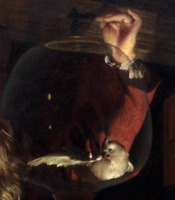
Flight
A chorus of juvenile heartbeats affected by Atrial Septal (ASD) and Ventricular Septal Defects (VSD), Patent Ductus Arteriosus(PDA), and Aortic Valve Stenosis (AVS), transposed to a higher frequency to simulate birdsong -
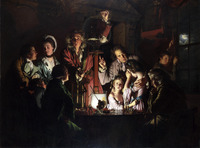
An Experiment on a Bird in the Air Pump
In Joseph Wright’s 'An Experiment on a Bird in the Air Pump' (1768), he depicts the re-enactment of Boyle’s famous experiment. Contrary to the restricted viewing of this experiment in the confines of Gresham College by the gentleman of the Royal Society, this audience includes a variety of individuals of different ages and gender, exhibiting a mixture of emotions: a young girl worriedly watches the fate of the bird, while another is comforted by her father, seemingly too upset to view the rest of the experiment; a young boy and middle-aged man look on with absorption, while two young lovers only have eyes for each other; lastly an old man meditates on a skull in a jar, and the scientist stare out at the viewer, and not at the experiment. -
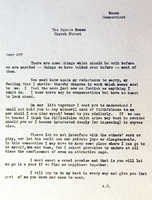
Amelia's letter
Amelia Earhart sat down on the morning of February 7th, 1931, and penned this letter to her publicist and future husband, George Putnam: "Please let us not interfere with the others’ work or play, nor let the world see our private joys or disagreements. In this connection I may have to keep some place where I can go to be myself, now and then, for I cannot guarantee to endure at all times the confinements of even an attractive cage". -
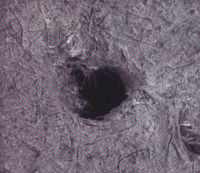
Brontëan Abstract
Pinhole made by Charlotte Brontë -

Resonance
Demonstration of sympathetic vibration using the optical (flame) microphone -

The Tacoma Narrows Bridge
The old Tacoma Narrows bridge was named Galloping Gertie because it vibrated rather strongly whenever there was a little wind due to resonance, the property which most objects have, of vibrating more strongly when exposed to an external force which is itself vibrating at the object's natural frequency. Crossing Gertie was actually quite a popular thing to do, similar to riding a roller-coaster. On November 7, 1940, things changed for the worse however. It was a day of rather high winds which caused Gertie to take on a 30-hertz transverse vibration with an amplitude of 1½ feet. This developed into a twisting motion of about 14 hertz, which then tore the bridge in two. The only victim of the disaster was a three-legged Cocker Spaniel, Tubby, left in the back seat of a lone car abandoned on the bridge. -
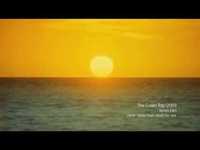
The Green Ray (Jules Verne)
"At last only a faint rim of gold skimmed the surface of the sea. 'The Green Ray! the Green Ray!' cried in one breath the brothers, Dame Bess and Partridge, whose eyes for one second had revelled in the incomparable tint of liquid jade. Oliver and Helena alone had missed the phenomenon which had at last appeared after so many fruitless observations. Just as the sun was shooting its last ray into space their eyes met, and all else was forgotten in that glance. But Helena had caught the black ray, shining from the young man's eyes, and Oliver the blue ray beaming from hers. The sun had gone down, and neither Oliver nor Helena had seen the Green Ray" (Verne 1883:136). -

The Green Ray (Jay Gatsby)
“Gatsby believed in the green light, The orgiastic future that year by year recedes before us. It eludes us then, but that’s no matter – to-morrow we will run faster, stretch out our arms further... And one fine morning – So we beat on, boats against the current, borne back ceaselessly into the past” (Fitzgerald 1983: 188). -
Quinine and Rhubarb Compound (Livingstone Rouser)
"Cathartic, tonic and anti-malarial. One to three may be taken with a little water, when an attack of malarial fever threatens, and repeated in two hours if necessary. Especially adapted for use as a purgative in the Tropics" (BWC 1925:136). The treatment, the Livingstone Rouser, was formulated by Dr Livingstone who, after an attack of malaria in 1853, patented this mixture of quinine and purgatives (calomel, rhubarb and jalop) mixed with opium.


